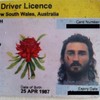The Koori surfing titles, held in flawless head-high conditions at the iconic Bells Beach in Victoria last week, hold a special place in the heart of Gumbaynggirr-Bundjalung man, Otis Carey - and not just because he's won it for the past two years running."It's one of my favourite things in surfing. It's super family. It's a tight knit scene," he says.He might have competed in dozens of Australian Junior Series events alongside the likes of World Tour surfers Owen Wright, Jack Freestone and Julian Wilson, but he says there is no prouder achievement than putting on a good show for his people.
Advertisement
"Being a blackfulla in surfing, it's not like footy or something where everyone grows up playing it and there are so many Indigenous athletes representing at the top level. It's a much smaller scene but we're just as proud," he says.He beat 15-year-old rising star and Rip Curl team rider Finn Hill in the final and is quick to lavish praise on the young talent."I can't believe how young he is but yeah, I just got the right waves with that extra bit of wall and was able to win it," he says.Raised on the mid-north coast of NSW in what is traditionally known as Gumbaynggirr country - an area encompassing Coffs Harbour, Bellingen, Nambucca Heads and Woolgoolga - Otis was too young to remember his introduction to the ocean (he thinks he was two).
"GUUNU GNAL GNAL YURRUUNDA" from the Ngurlaami exhibition. Translated it means, travelling up and down on life's journey, says Otis.
It goes without saying he feels a strong connection to this stretch of coast. The same mangrove river system that feeds the ocean and grooms his beloved surf spots and sand banks once provided a hiding spot for his grandmother for up to two years during the Stolen Generation when Christian missionaries came to abduct Indigenous children for "re-education" at white boarding schools. His grandfather, meanwhile, was one of the last of his mob to receive the traditional initiation body scarring ritual."The ocean and the coast here has looked after us for tens of thousands of years so I definitely feel a connection to it," he says."My people's totem on the Gumbaynggirr side is the ocean, so it was pretty inevitable that I was end up surfing or doing something that involves the ocean," he says.
Advertisement
Growing up as one of the only Indigenous kids at school had its challenges. There were insults, fights, and a confidence-corroding sense of alienation but he's stronger for it today and determined to blaze a trail for future generations."It can be difficult being a Koori kid, man, because there just aren't that many of you around so you feel a bit different, even when you're a kid at primary school. And that can make you a bit less confident to get out there and set your sights high and achieve the goals that you're capable of. So I just wanna bring to light all the positive aspects of our culture and really encourage kids to be proud and not be afraid to have a go," he says.
For years Otis drifted in and and out of the pro surfing fraternity, making ends meet stacking shelves in warehouses or picking up bits of design and modelling work for his former sponsor Insight. He became a father in his early 20s, meaning money and time were in short supply but he still managed to keep the surfing dream alive."The amount of times I've been down the coast and taken a can of beans and some bread for the weekend and slept in a car or pitched a tent…" he says.In 2016 he received a major boost when surfwear giant Billabong signed him on a unique deal that allows him to combine his major loves of art, design and surfing while also pushing his culture in the most positive way possible."I just wanna influence other indigenous kids, but not only indigenous kids – non-indigenous kids as well – and create a positive impact, really," he says of his role at Billabong.
Advertisement
Everywhere Otis travels for the surfwear giant he leaves a trail of art behind, whether it's Tuk Tuks in Thailand, Land Rovers on Stradrboke Island, toilet blocks in Sumatra (see above), or walls in Sydney and Melbourne."I paint contemporary indigenous art," he says. "The way I can best explain it is, it's a broken-down form of traditional symbols and stories that aren't giving all of it away but just enough for people to understand. I think it's super important. I just wanna do my part and share my culture in the best possible positive way. I think it's super important to be able to have that outlet for other people to experience," he says.
He took up painting initially "as another outlet to express myself" but performs it now with the added purpose of "wanting to tell a story about my culture." His first solo show, NGURLAAMI, at China Heights gallery in Sydney was a sell-out, moving $AUD24k worth of paintings in a night.His fledgling fashion design career, meanwhile, has been a long-time in the making. One of the first people to see potential in Otis was Ksubi founder and former-Insight head creative, Steve Gorrow, now the global art director of Billabong."I really look up to Stevie Gorrow," he says. "He's a creative genius and a mastermind when it comes to creative campaigns. I'm really excited to work alongside him."His first range of clothing for Billabong is due out later this year. In the meantime Otis spends his days in Byron Bay, in the Bundjalung nation, where courtesy of his grandfather his roots also run tens of thousands of years deep.
